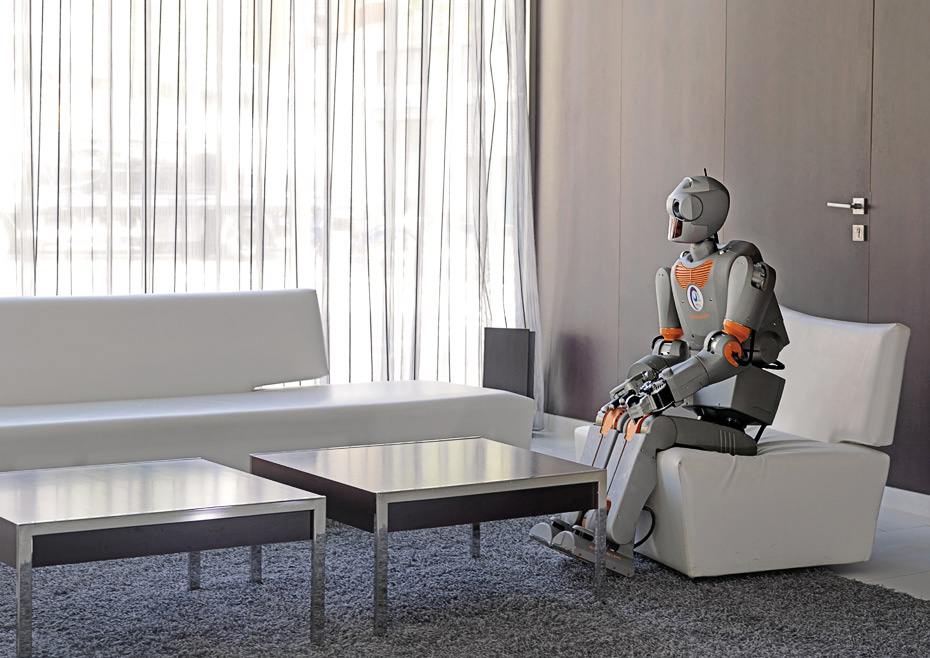
Reem-B, #2 (Pal), Barcelona, Spain, by Vincent Fournier, 2010
At some point not too far in the future it is likely that artificial intelligence will arrive. The idea engenders conflicted emotions in the species currently at the apex of terrestrial brainpower: enormous fascination spiced with delicious dread. The Ava android in Alex Garland’s Ex Machina is the most persuasive visualization of human-made machine consciousness in a film since the HAL 9000 computer in 2001: A Space Odyssey.
In a series of pictures titled The Man Machine, the French photographer Vincent Fournier staged “speculative fictions” about our relations with intelligent machines. The robot comfortably installed in the easy chair, a second-generation Reem-B, created by Pal Robotics in Spain, is already out of date, superseded in 2013 by a more advanced and capable third-generation model. But this accelerated obsolescence doesn’t detract from the picture’s purpose as a conceptual experiment. In other photographs in the series, Reem-B interacts with people who stand in for the viewer’s potential reactions. Here, removing human intermediaries from the scene encourages us to focus on the possibility of the robot’s interior life.
We pause in impersonal seating areas like this one, in receptions and hotel lobbies, to rest, wait, or converse. An inactive robot, which operates according to programmed algorithms, has neither the physical need nor the social motivation to sit down. This robot’s alert pose, with hands on knees, back slightly bent, whimsically raised feet, and head inclined toward the veiled window, suggests awareness and reflection because this is how humans behave. The Reem-B appears to be waiting for something to happen. Is it showing signs of uncertainty? If a robot responds as a person would in the same situation, then we might be inclined to accept it as an entity possessing attributes in common with ourselves. All the same, these external signs cannot be taken as evidence of self-awareness, since the machine could be programmed to simulate them—the psychological dilemma that makes Ex Machina so compelling.
The picture, like others in the series, is humorous. Everything about the robot isolated in this lifeless corporate setting is incongruous and absurd, especially the conjunction of shag pile carpet and clumpy robot feet. Robots’ jointed mechanical limbs are ingenious feats of engineering that still fall short of our own natural flowing movements. These potentially Promethean automatons labor to carry out everyday tasks we accomplish with ease. We want them to become perfect, to glide around with quasi-human freedom, and we also—like heedless servants of some deep evolutionary impulse that might not serve our best interests—want them to think. Fournier’s picture makes us feel sympathy for the Reem-B. Even more tellingly, he draws out our readiness to empathize with the mentality of a machine.

